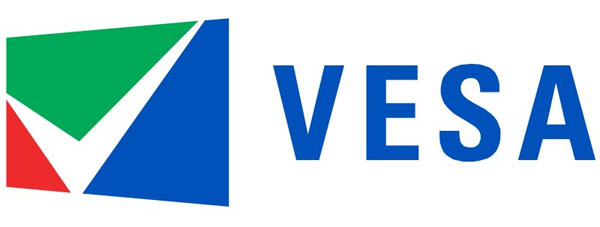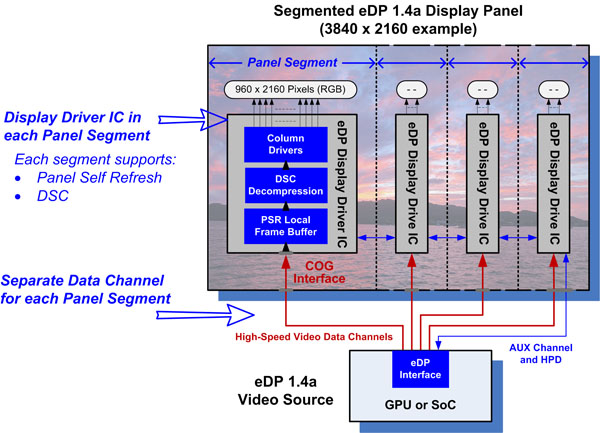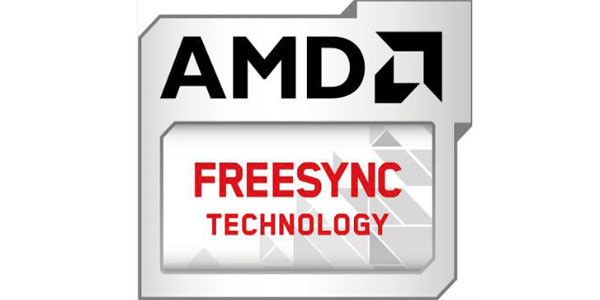VESA Publishes Embedded DisplayPort Standard 1.4a, Includes Adaptive Sync
To maintain pace with ever-increasing resolutions, color bit-depth and refresh rates, the Video Electronics Standards Association (VESA) has announced the latest version of the Embedded DisplayPort (eDP) specification – 1.4a. This supersedes version 1.4, which was first introduced in February of 2013.
The principal upgrades include a new Display Stream Compression (DSC) standard (1.1) and an enhanced segmented display panel capability. Both features allow for greater data rates and lower power usage, especially in integrated graphics systems such as smartphones, tablets, laptops and all-in-ones.
We first learned of DisplayPort's segmented panel architecture when the first-generation Ultra HD monitors hit the market. Users had a choice of connecting their PC using two HDMI cables or a single DisplayPort supporting Multi-Stream Transport (MST). The dual-HDMI solution was so quickly rejected by the market that it's seen on few products today. Because the majority of newer graphics boards support DisplayPort 1.2 with MST, it's far easier to use the single-cable solution to take advantage of a UHD monitor's native 3840 x 2160 pixel resolution.
The name of the game in today's rapidly changing video display market is bandwidth. With new standards such as Rec.2020 demanding the rendering of more colors and more pixels at higher refresh rates, connection interfaces must be able to keep up. The resolution evolution is moving fastest in the portable device realm. Products such as the iPhone and iPad boast pixel densities of over 300 ppi, and computer monitors are now topping 200 ppi. And with 5K monitors already shipping, it seems like we'll always need more bandwidth.
The new eDP 1.4a standard can move bits at 8.1 Gbps per lane. The GPU-to-display interface can be divided into two or four screen segments, allowing for a theoretical limit of 32.4 Gbps. Coupled with DSC 1.1 compression, data packet size can be reduced at up to a 3:1 ratio. Not only does this allow for more of all the good stuff – pixels, colors and framerate – it does so with lower power consumption.
Although the signal chain does not yet exist, eDP 1.4a can support 8K (7680 x 4320) resolution at 60 Hz, and Ultra HD is supported at 120 Hz with 10-bit color.
Refinements to previous technologies in eDP 1.4 include Panel Self-Refresh (PSR). By only updating changed pixels from frame to frame, the amount of data in the pipeline is reduced. Any pixels that remain the same between frames are not updated, further saving power and bandwidth.
Get Tom's Hardware's best news and in-depth reviews, straight to your inbox.
Finally, for those wondering about Adaptive Sync (or FreeSync as AMD calls it), it is indeed part of both the eDP 1.4 and 1.4a specs. Why aren't we seeing it yet in shipping products? As it turns out, it's part of the optional section of the standard. It seems that all that's needed are monitors that support it. AMD has stated that as many as 11 new displays will be shipping in Q1 with the feature enabled. Coupled with an appropriate AMD graphics board and a driver update, frame-tearing could quickly become a thing of the past.
Because we're only just now seeing products based on DisplayPorts 1.3 and 1.4, it's logical to conclude that version 1.4a will begin to emerge by 2016, first in portable devices and eventually in desktop systems. For hardware developers, the standard is available to VESA members immediately.
Follow us @tomshardware, on Facebook and on Google+.

Christian Eberle is a Contributing Editor for Tom's Hardware US. He's a veteran reviewer of A/V equipment, specializing in monitors. Christian began his obsession with tech when he built his first PC in 1991, a 286 running DOS 3.0 at a blazing 12MHz. In 2006, he undertook training from the Imaging Science Foundation in video calibration and testing and thus started a passion for precise imaging that persists to this day. He is also a professional musician with a degree from the New England Conservatory as a classical bassoonist which he used to good effect as a performer with the West Point Army Band from 1987 to 2013. He enjoys watching movies and listening to high-end audio in his custom-built home theater and can be seen riding trails near his home on a race-ready ICE VTX recumbent trike. Christian enjoys the endless summer in Florida where he lives with his wife and Chihuahua and plays with orchestras around the state.
-
Ninjawithagun "Because we're only just now seeing products based on DisplayPorts 1.3 and 1.4..."Reply
Really?? Name ONE product that has a DisplayPort 1.3 or 1.4 port. That's what I thought! -
childofthekorn Reply"Because we're only just now seeing products based on DisplayPorts 1.3 and 1.4..."
Really?? Name ONE product that has a DisplayPort 1.3 or 1.4 port. That's what I thought!
http://www.kvm-switches-online.com/dpn-4p.html?utm_medium=shoppingengine&utm_source=googlebase&gclid=CjwKEAiA0uGmBRDwj7mE1v-LlCYSJADxH16O1NK-q3_bgqA6gYpVCCHHX5KHVlbCbSuPkmyD9vIvBhoCOFzw_wcB -
childofthekorn I thought eDP already had adaptive sync. That was apart of the main reporting when FreeSync was first in use, which makes the whole Mobile GSync "fiasco" even more funny.Reply -
ubercake Hopefully the manufacturers will buy in to the necessary changes and adaptive sync will be part of any DP-connected monitors. So far, it hasn't happened.Reply -
toadhammer "Although the signal chain does not yet exist, eDP 1.4a can support 8K (7680 x 4320) resolution at 60 Hz, and Ultra HD is supported at 120 Hz with 10-bit color."Reply
From my napkin calculation, that would be 8k with 6 bit color. And 8K/60Hz or UHD/120Hz on a single lane! with whole lanes left over! -
eklipz330 "The resolution evolution is moving fastest in the portable device realm. Products such as the iPhone and iPad boast pixel densities of over 300 ppi, and computer monitors are now topping 200 ppi."Reply
I usually don't nitpick, but WHY ARE THOSE TWO APPLE DEVICES EVEN LISTED FOR PIXEL DENSITY? Motorola Turbo has 565 pixels per inch, and almost every flagship phone from the past 3 years surpasses apple's pixel density.
now, i am not FOR the pixel density race, i think it's a bunch of garbage. but if you're going to list products to prove a point, PICK BETTER PRODUCTS. -
childofthekorn Reply15259848 said:"The resolution evolution is moving fastest in the portable device realm. Products such as the iPhone and iPad boast pixel densities of over 300 ppi, and computer monitors are now topping 200 ppi."
I usually don't nitpick, but WHY ARE THOSE TWO APPLE DEVICES EVEN LISTED FOR PIXEL DENSITY? Motorola Turbo has 565 pixels per inch, and almost every flagship phone from the past 3 years surpasses apple's pixel density.
now, i am not FOR the pixel density race, i think it's a bunch of garbage. but if you're going to list products to prove a point, PICK BETTER PRODUCTS.
Unfortunately because Apple. -
Ninjawithagun PRODUCT means actual media that you can take fully advantage of Display 1.3 or 1.4. KVMs do NOT count :P TVs and monitors - get with the program knuckle head!Reply -
childofthekorn Reply15266760 said:PRODUCT means actual media that you can take fully advantage of Display 1.3 or 1.4. KVMs do NOT count :P TVs and monitors - get with the program knuckle head!
Sounds like you're just too mad.


